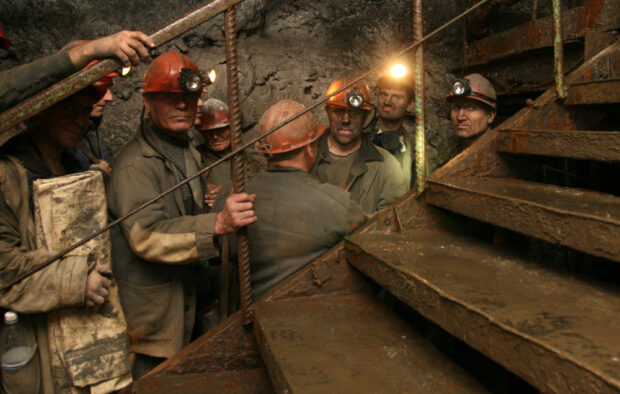The U.S. coal industry may be shrinking rapidly as the country shifts to renewable energy, but insurer and self-insured companies’ liabilities for black-lung occupational disease claims have ballooned — to an estimated $9 billion and perhaps more than $14 billion.
That’s according to a recent report from Milliman, the global actuarial and consulting firm. The study’s authors took a first-ever look at the cost of existing and future claims, payments for which will continue for years to come.
The report did not name the insurers that owe the most. But historically, some of the largest P/C carriers have insured against black-lung claims. Most of the claims come from miners in Kentucky, West Virginia and other coal-rich Appalachia states.
“We just wanted to raise awareness and help develop solutions to protect the financial solvency of the non-trust fund entities on paying federal black-lung liabilities,” said Travis Grulkowski, a Milliman actuary and one of the authors of the report.
A little history of the black-lung program helps explain the complexities. Since 1969, the federal government has paid a share of miners’ claims for black lung disease, or pneumoconiosis, caused by years of breathing coal dust. In the 1970s, the law was amended, making coal companies more responsible for benefits, either by purchasing commercial insurance coverage or, if approved by a federal agency, self-insuring.
If the mine operator goes bust, the federal trust fund will assume responsibility for the benefits payments, Milliman reported. The trust is funded through a tax on each ton of coal pulled from the ground. As coal consumption plummeted in the last decade, a number of mining companies went bankrupt, and tax payments into the trust fund have fallen, the U.S. Government Accounting Office has reported.
But the claims liabilities have only climbed.
As miners have been laid off, many have filed black-lung claims, which by law must be paid for a worker’s lifetime, in many cases. Changes approved by Congress through the years also have made more workers eligible for the federal benefits.
The GAO has reported that the federal trust fund’s liabilities now stand at about $5 billion and are expected to top $15 billion by the year 2050.
Alarmed by the numbers, the Department of Labor changed the game somewhat in 2019, the Milliman report explained. If coal companies cannot meet the new collateral requirements for self-insurance, they must purchase commercial insurance coverage. To complicate matters, some 35 carriers, including Travelers and AIG, have pledged to cut ties with the fossil fuel industry, leaving fewer insurers to cover new claims.
Some black-lung claims must cover expensive lung-replacement surgery. But for the most part, it’s indemnity payments that have run up the costs, the Milliman report found.
“Unlike traditional workers compensation, where the majority of long-tailed liabilities result from medical payments (for example, lifetime care costs), as indemnity benefits are either settled or are capped by statutory limits, black-lung reserving requires projecting both indemnity and medical benefits for the life of the miner as settlements have not historically been allowed by the DOL,” the Milliman authors wrote.
Federal black-lung benefits payments are offset, or reduced, when state-based workers comp claims are accepted for the same workers. But some of the same insurers may be liable for the state claims, as well.
To reach its eye-popping numbers in the report, Milliman’s team said it culled through the DOL’s extensive database on black-lung claims. The study authors then applied the firm’s proprietary black-lung reserving model and actuarial methodologies to calculate costs for all current and future claimants and their dependents. The projections also include the cost of defending the claims in litigation.
To help put the dollar amount in perspective, the $9.3 billion in black-lung liabilities can be compared to other costly sources of claims. The 2001 World Trade Center collapse, for example, produced insured losses of more than $43 billion, according to the Insurance Information Institute. Asbestos-related claim costs across the country are expected to top $100 billion, with about $9 billion still unpaid, Milliman’s Grulkowski said.
If more self-insured coal companies and perhaps some insurers are unable to pay the mounting black-lung claims, U.S. taxpayers may ultimately be stuck with at least part of the bill, the report said.
“An increase in miners leaving the industry and filing for benefits, along with lower profits from coal mine operations, will likely cause self-insured coal mine operators to struggle to pay black-lung benefits to their former mining employees,” the report noted. “Even for those corporations that are currently financially stable, the DOL’s lengthy and selective self-insurance qualification process, coupled with the difficulty in securing commercial insurance for federal black-lung liabilities, makes the future funding of the liabilities highly uncertain.”





















 Uncertainty Keeps Prices Up; No Prior-Year Loss Development: Travelers
Uncertainty Keeps Prices Up; No Prior-Year Loss Development: Travelers  Former MLB Player Charged With Insurance Fraud in Florida
Former MLB Player Charged With Insurance Fraud in Florida  Pennsylvania Issues ‘Expectations’ for Carriers Regarding AI Use
Pennsylvania Issues ‘Expectations’ for Carriers Regarding AI Use  Ford Recall of 43,000 SUVs Due to Fire Risk Won’t Remedy Gas Leaks
Ford Recall of 43,000 SUVs Due to Fire Risk Won’t Remedy Gas Leaks 





